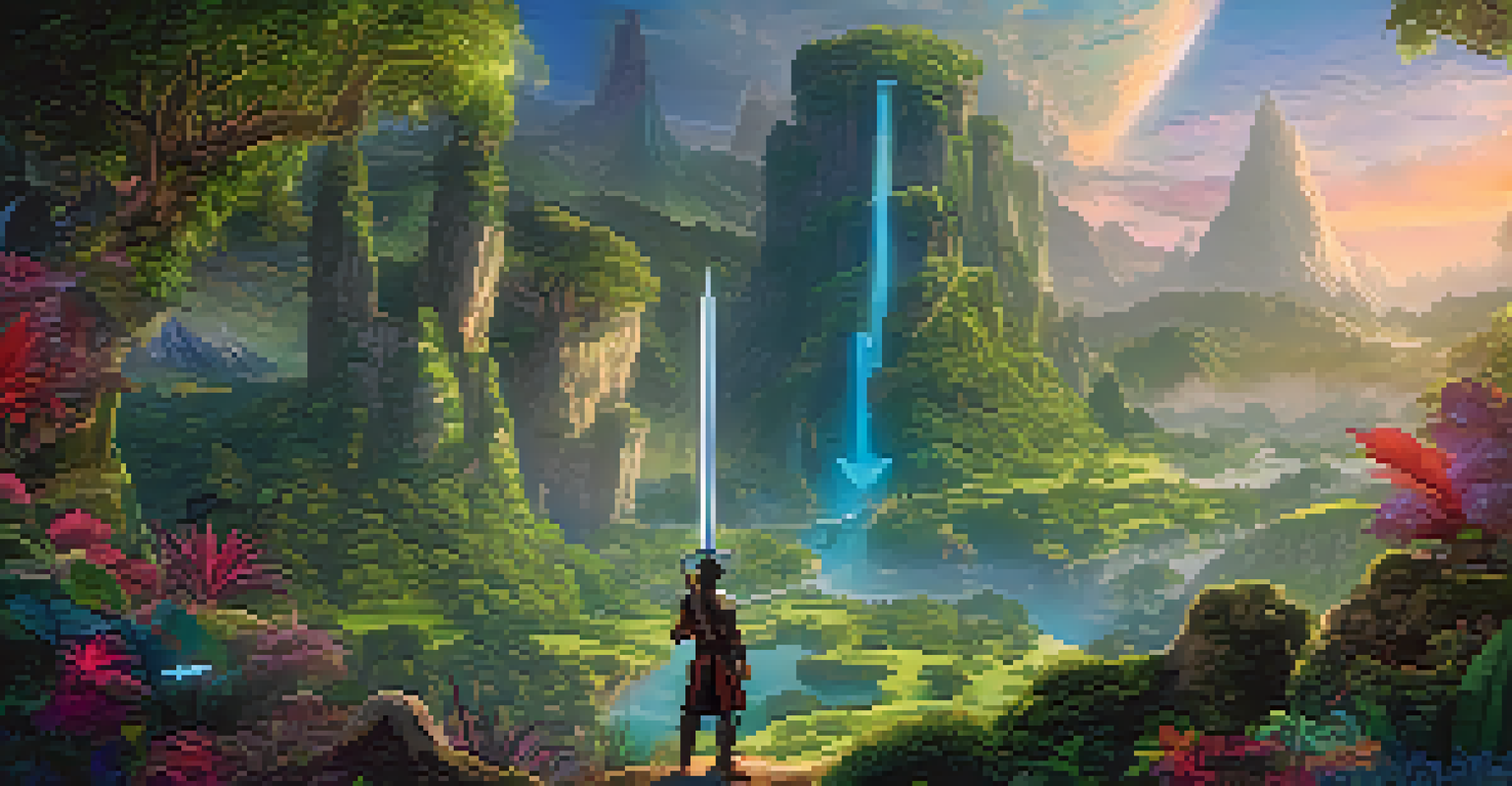The Rise of NFTs as Digital Companions in Modern Society

Understanding NFTs: What Are They and How Do They Work?
Non-fungible tokens, or NFTs, have taken the digital world by storm. Unlike cryptocurrencies like Bitcoin, which are interchangeable, NFTs are unique digital assets that can represent ownership of various items, from artwork to music and even virtual real estate. This uniqueness is what makes them appealing as digital companions.
NFTs are a way to represent ownership of digital assets in a way that has never been possible before.
At their core, NFTs are built on blockchain technology, which ensures that each token is verifiable and cannot be duplicated. This means that when you purchase an NFT, you own a piece of digital content that is one-of-a-kind. Just like having a rare collectible in the physical world, owning an NFT can give you a sense of pride and exclusivity.
As more artists and creators embrace this technology, the market for NFTs continues to expand, leading to innovative uses that go beyond simple ownership. From virtual pets to digital avatars, NFTs are becoming companions that interact with users in meaningful ways, hinting at their potential to reshape our digital lives.
The Emotional Connection: Why We Form Bonds With Digital Companions
In today's fast-paced world, people often seek connections that transcend physical boundaries. Digital companions, especially those represented by NFTs, allow individuals to forge emotional bonds that can be just as strong as those with physical pets or friends. This phenomenon is rooted in the human desire for companionship, even in a virtual space.

Consider the rise of virtual pets—NFTs that can be owned, cared for, and interacted with. Much like a Tamagotchi from the '90s, these pets can evoke feelings of joy and responsibility, creating a nurturing relationship that many find fulfilling. That emotional investment can lead to a sense of identity, as users personalize and showcase their digital companions.
NFTs Redefine Digital Ownership
NFTs provide unique ownership of digital assets, allowing creators to connect directly with collectors and foster community.
Furthermore, these connections can be amplified through social media platforms where users share their experiences and achievements with their digital companions. As communities form around these NFTs, the shared experiences can deepen the bonds between users and their virtual counterparts, making the relationship feel all the more real.
The Role of NFTs in Virtual Worlds and Gaming
The gaming industry has been quick to adopt NFTs as a way to enhance player experiences. In many games, players can own unique items, characters, or skins as NFTs, allowing them to showcase their achievements and personal style. This ownership creates a new layer of engagement, as players invest not only their time but also their resources into these digital assets.
The future is already here — it's just not very evenly distributed.
Imagine a fantasy game where you can own a legendary sword as an NFT. Not only does it give you an advantage in the game, but it also becomes a part of your gaming identity. This sense of ownership transforms the way players interact with the game and each other, fostering community and competition.
Moreover, as virtual worlds become more immersive, NFTs are poised to create entire ecosystems where users can buy, sell, and trade their digital companions. This dynamic marketplace not only fuels innovation within gaming but also reflects larger trends in how we interact with technology and each other.
NFTs in Arts and Culture: Redefining Creative Ownership
NFTs are revolutionizing the art world by redefining what it means to own a piece of art. Artists can now sell their work directly to collectors without intermediaries, ensuring they receive a fair share of the profits. This direct connection between creators and collectors fosters a sense of community, as art lovers can engage with the artists they admire.
Additionally, NFTs enable artists to create limited editions and unique pieces, allowing them to generate more value from their work. For instance, an artist might release a series of NFTs that all have unique features, making each one a sought-after collectible. This exclusivity can lead to deeper emotional connections between the collectors and the art, as they treasure their unique digital possessions.
Emotional Bonds with Digital Pets
Digital companions, like virtual pets represented by NFTs, evoke strong emotional connections similar to those with physical pets.
As art becomes increasingly digitized, NFTs also provide a way to preserve cultural heritage. Museums and cultural institutions are exploring ways to tokenize artifacts and artworks, ensuring that these pieces can be appreciated and owned by future generations while maintaining their historical significance.
The Challenges and Criticisms Facing NFTs
Despite the excitement surrounding NFTs, they aren't without their challenges. Critics often point out issues like environmental concerns, as the blockchain technology behind NFTs can consume significant amounts of energy. This has led to calls for more sustainable practices within the NFT space, pushing developers to explore greener alternatives.
Additionally, the market for NFTs can be volatile, with prices fluctuating dramatically based on trends and speculation. This volatility can create a sense of uncertainty for collectors, making it difficult to assess the true value of their digital companions. Newcomers to the NFT space may find themselves navigating a complex landscape, filled with both opportunity and risk.
Lastly, the issue of copyright and ownership rights raises serious questions. As more people create and sell NFTs, there are concerns about the authenticity of the art and whether creators are adequately compensated. To address these challenges, the industry must evolve, promoting transparency and ethical practices that protect both creators and collectors.
The Future of NFTs: Where Are We Headed?
As we look to the future, the potential for NFTs as digital companions is vast. With technology continually evolving, we can expect to see even more innovative uses for NFTs that enhance our daily lives. From virtual reality experiences to interactive storytelling, the possibilities are limited only by our imagination.
Moreover, as more people recognize the value of digital ownership, we may see a shift in how society perceives possessions. Just like owning a car or a house, owning a digital companion can become a status symbol—a mark of identity in an increasingly digital world. This cultural shift will likely drive further adoption of NFTs across various sectors.
Challenges in the NFT Space
Despite their potential, NFTs face challenges such as environmental concerns, market volatility, and issues of copyright and ownership rights.
Ultimately, the rise of NFTs as digital companions signifies a broader change in how we interact with technology and each other. As these tokens become more integrated into our social and cultural fabric, they will not only enrich our experiences but also challenge our perceptions of connection, ownership, and value in the digital age.
Conclusion: Embracing the Digital Companion Revolution
The rise of NFTs as digital companions reflects a significant shift in modern society. As we embrace these unique digital assets, we open ourselves up to new forms of connection, creativity, and community. While there are challenges ahead, the potential benefits of NFTs are undeniable.
By understanding the landscape of digital ownership and the emotional connections we form with our digital companions, we can navigate this new frontier with curiosity and excitement. As we continue to explore the possibilities, we must also advocate for ethical practices that support creators and collectors alike.

In a world that often feels disconnected, NFTs can offer us a way to forge meaningful relationships—both with our digital companions and with each other. The future is bright, and as we move forward, let's embrace the digital companion revolution with open arms.